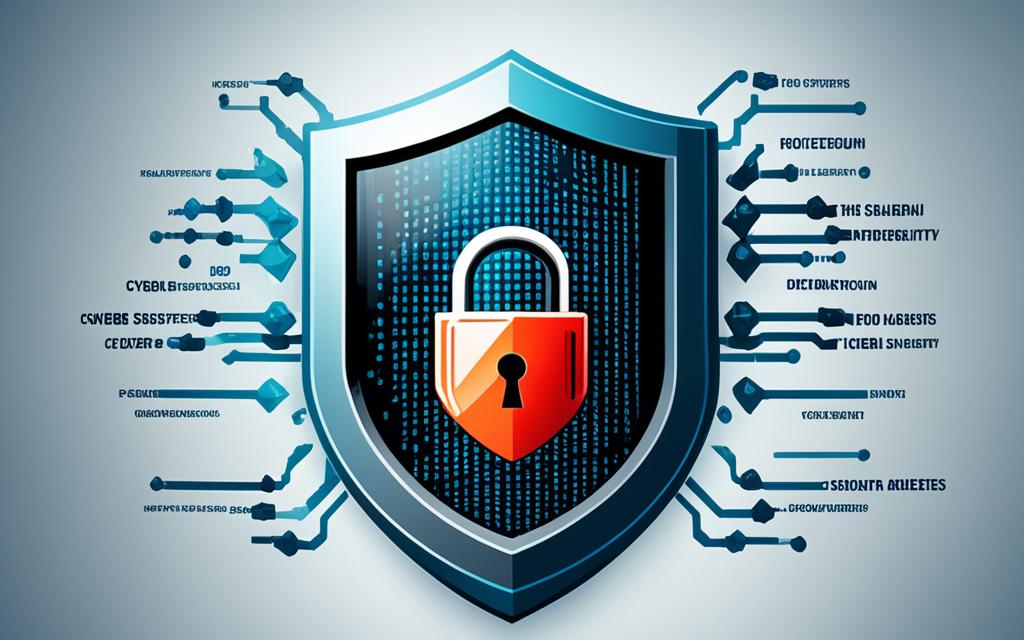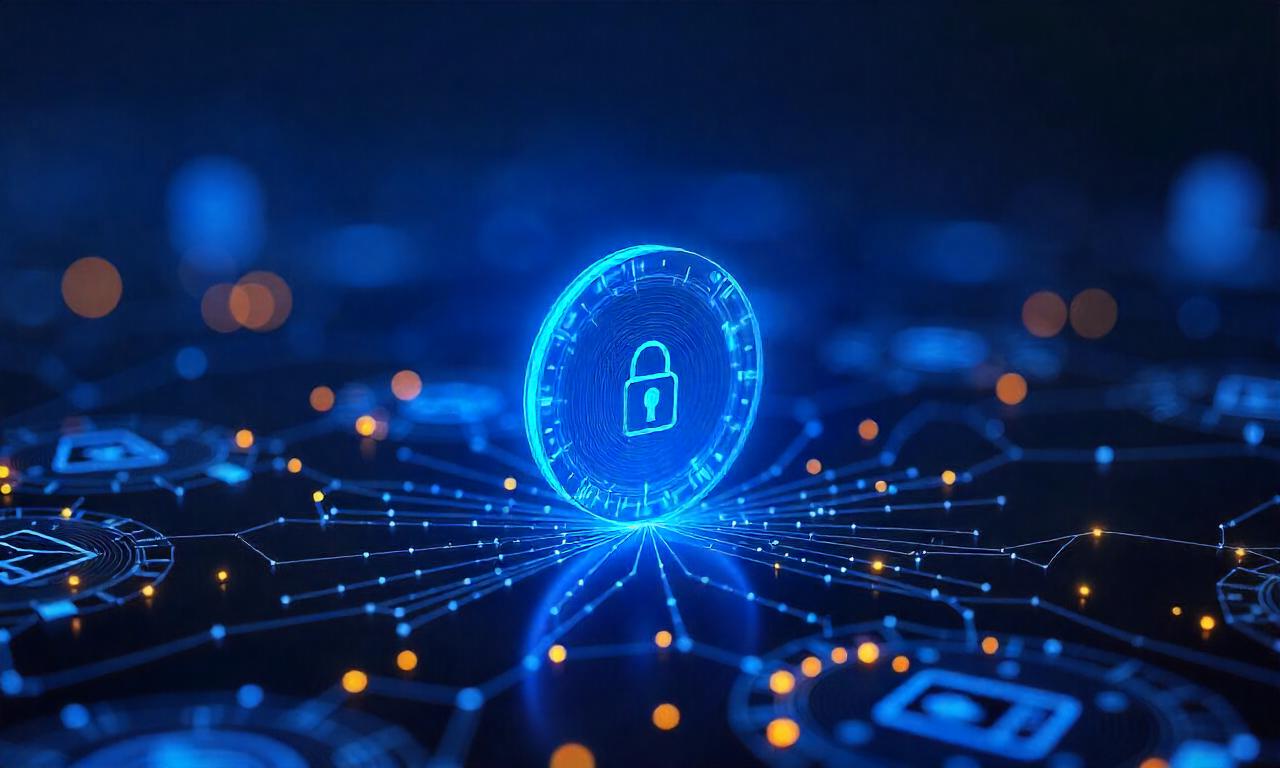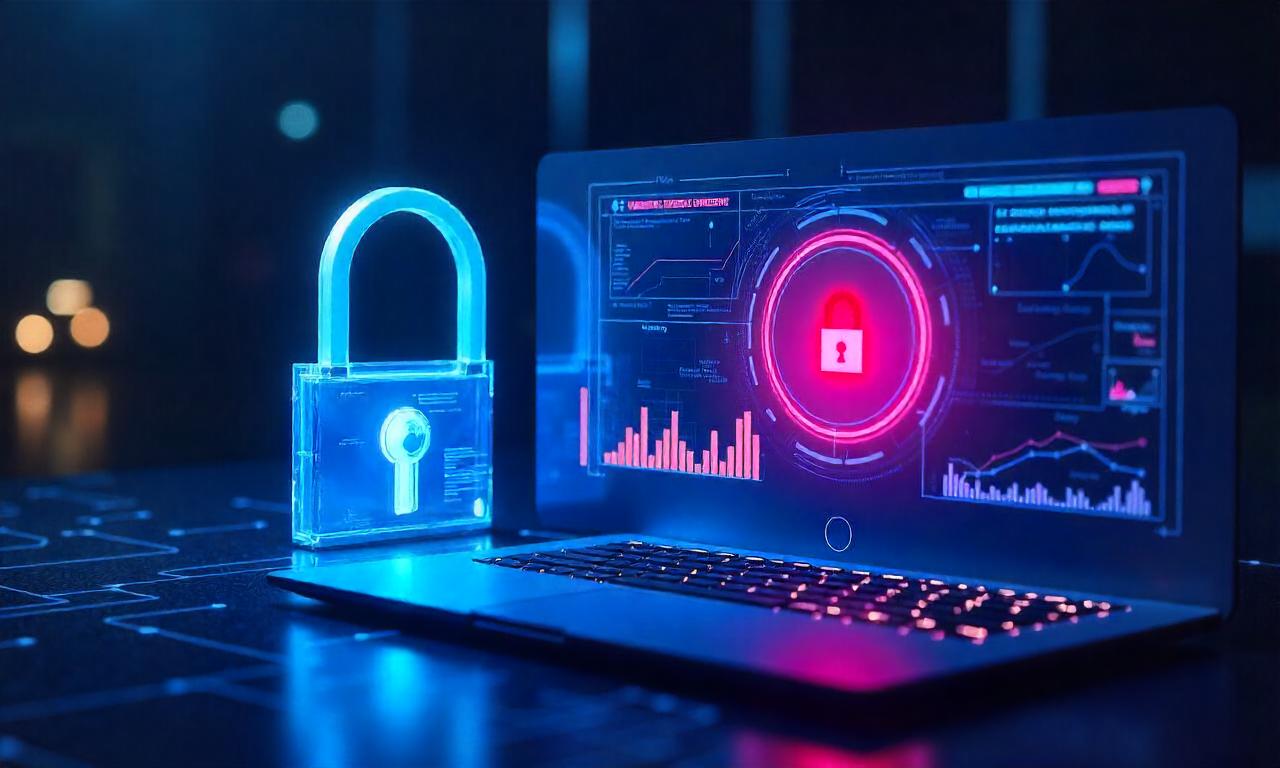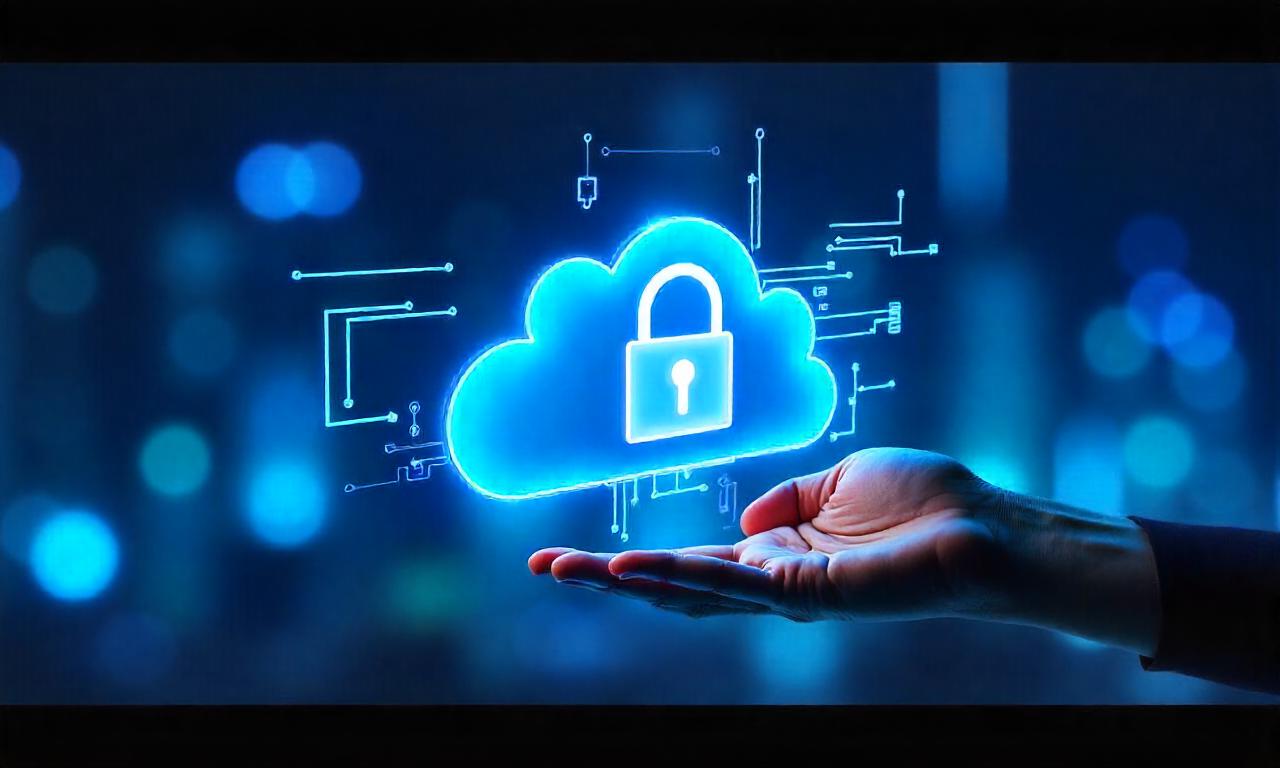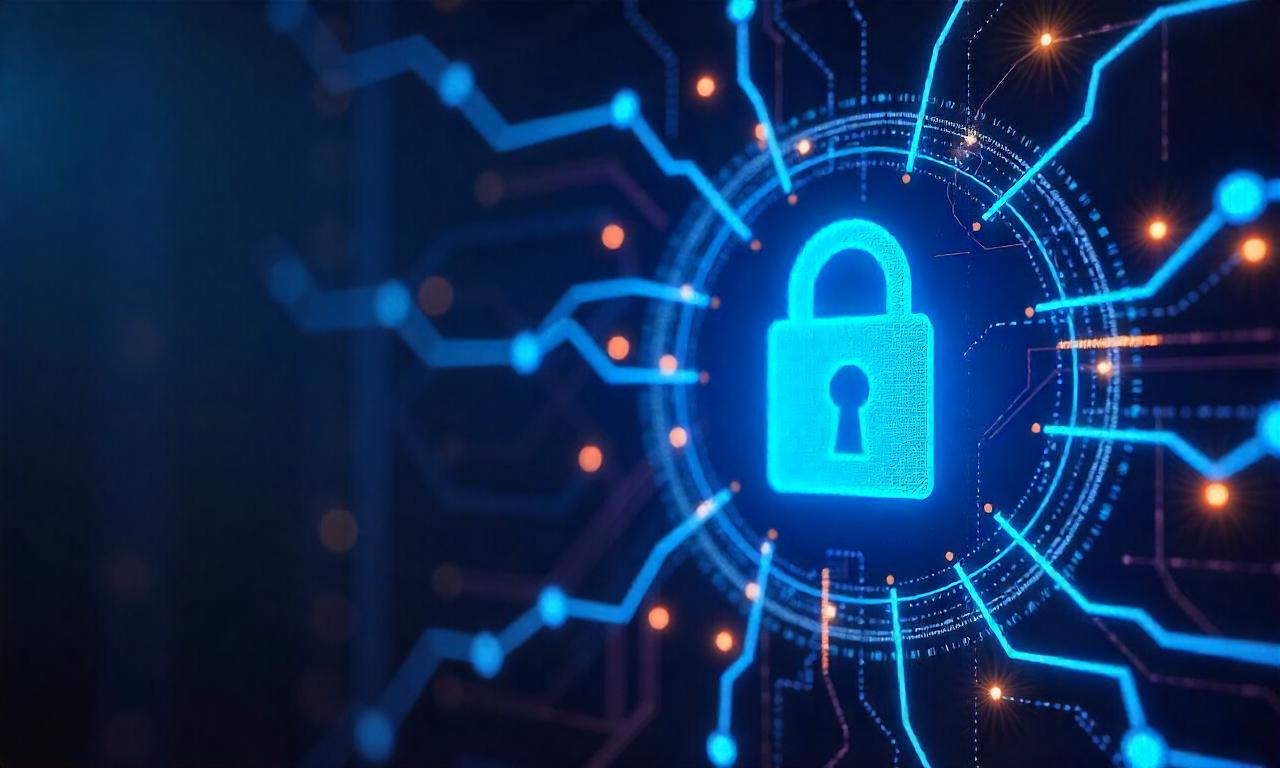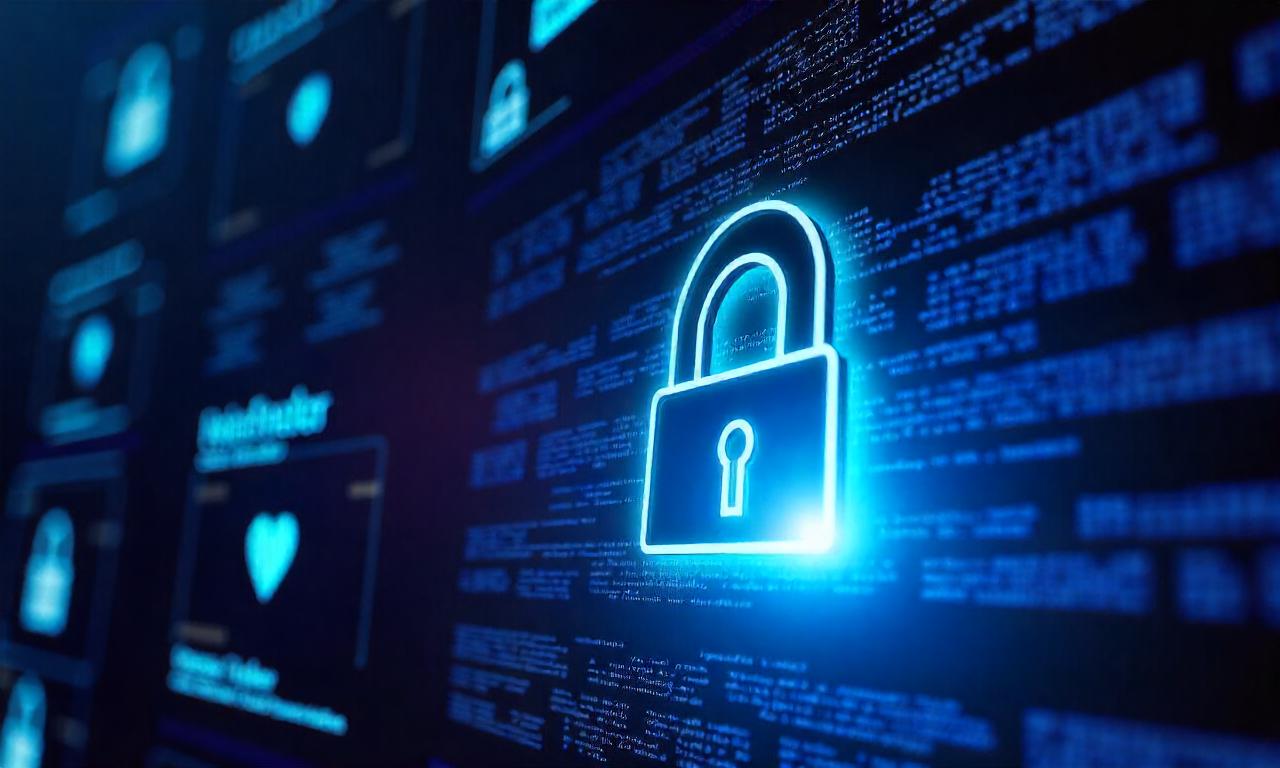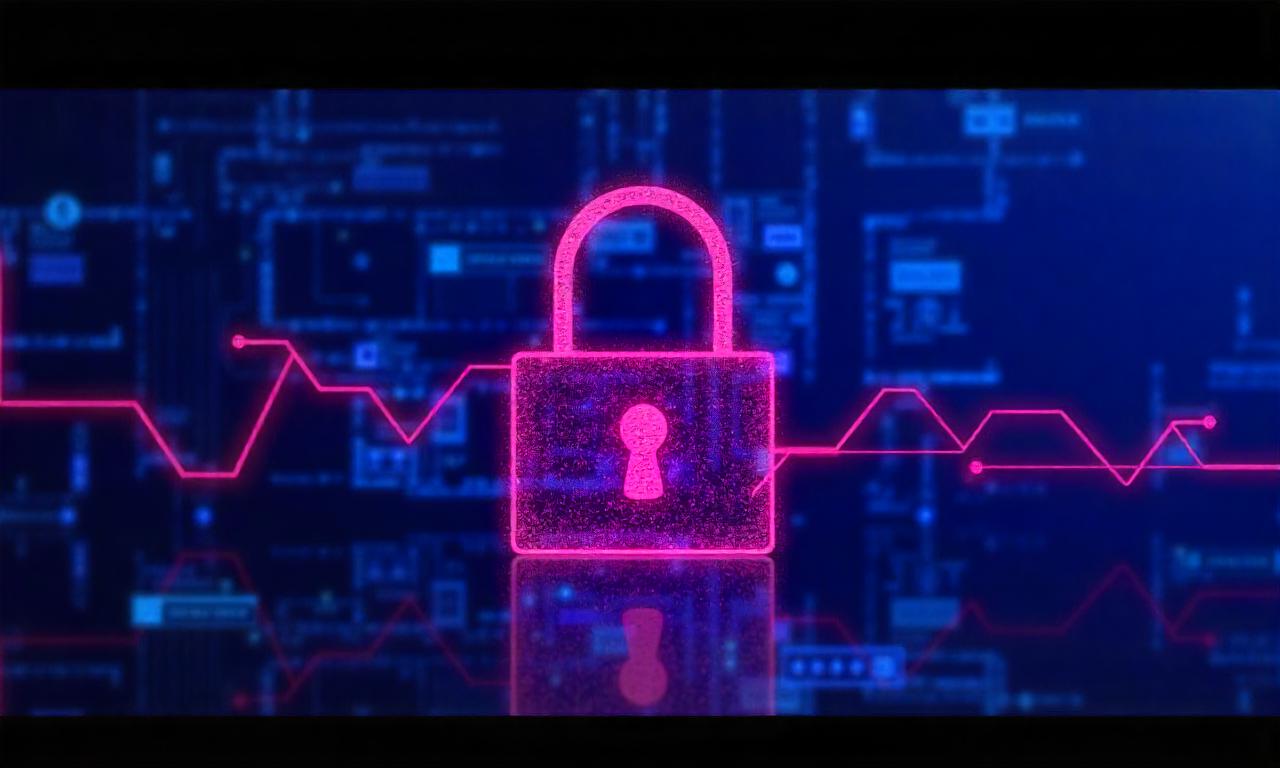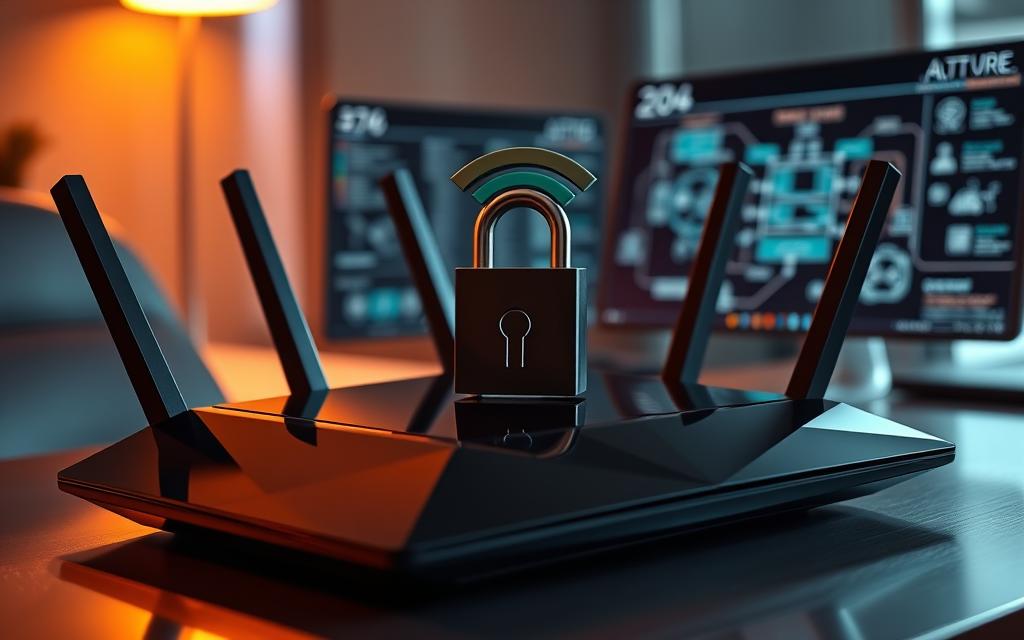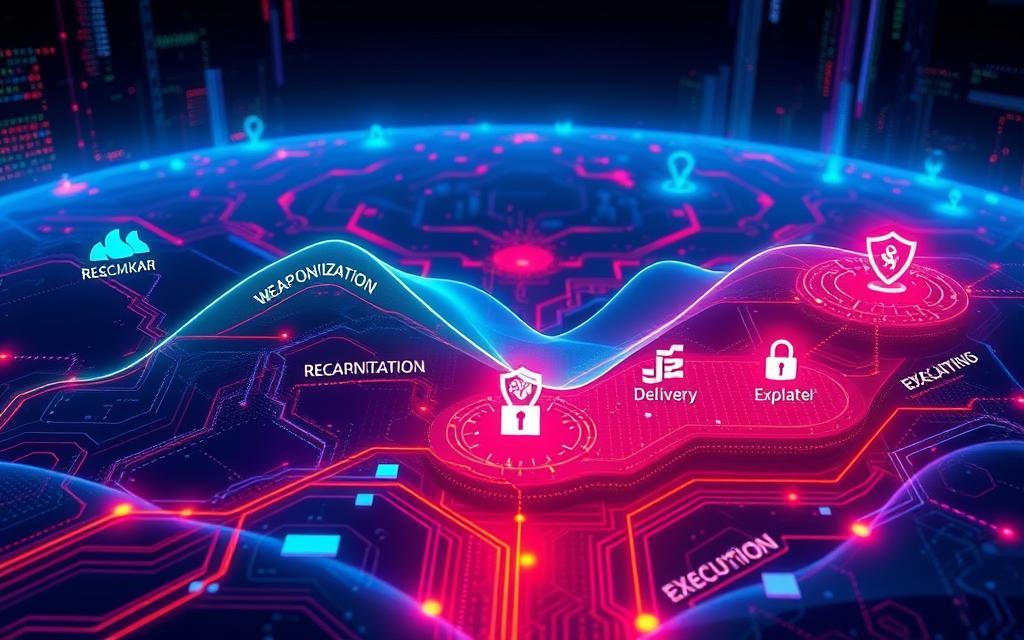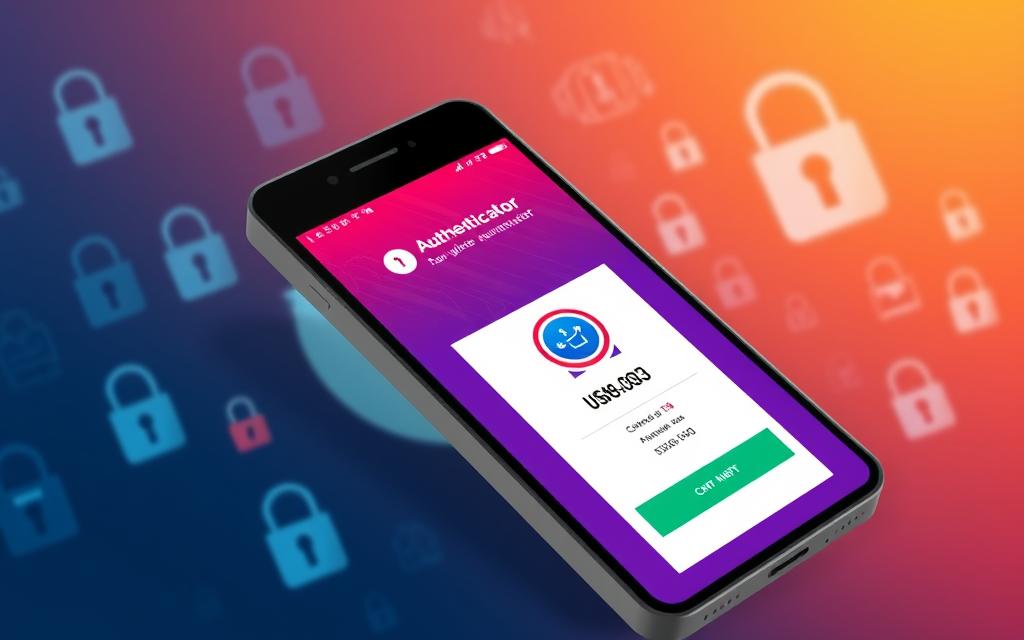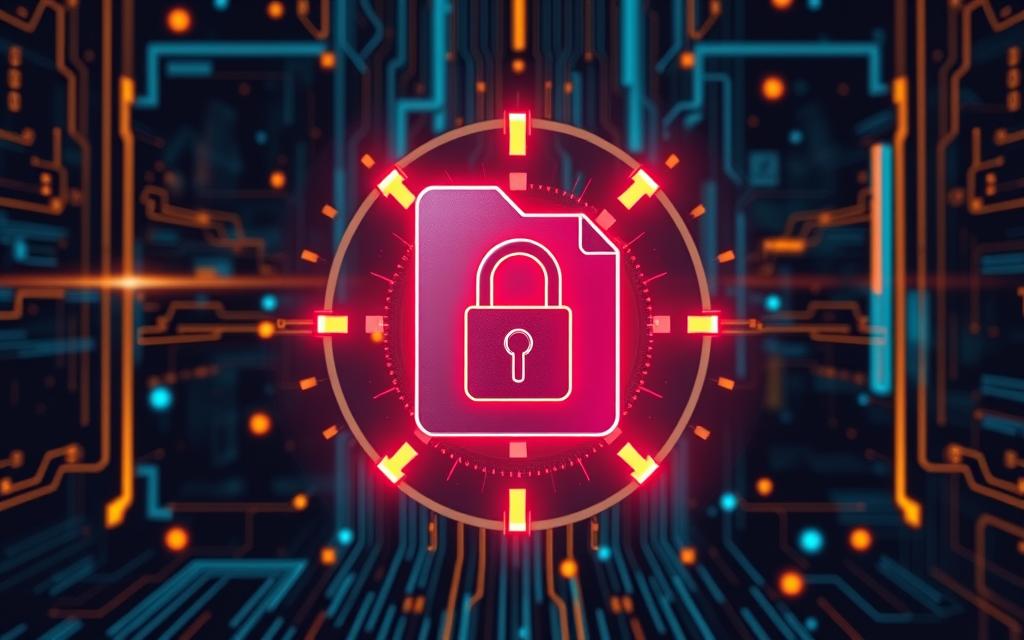Starting with cyber security can feel overwhelming, but don’t worry, I’ve got you covered. I’ll explain it in a way that’s easy to understand. We’ll cover the basics, threats, and best practices. By the end, you’ll know a lot about cyber security.
Let’s start with the question: what is cyber security? It’s about keeping digital info and systems safe from unauthorized access or harm. It protects your personal data, your business’s network, and the critical systems we all rely on.
The CIA triad is key to cyber security. It stands for Confidentiality, Integrity, and Availability. Confidentiality keeps sensitive info private. Integrity ensures data is correct and unchanged. Availability means people can access information when they need it.
Now, let’s get into more detail. We’ll look at different cyber security areas and common threats like DDoS attacks and phishing scams. We’ll also talk about how to stay safe as an individual or a company.
Are you ready to become a cyber security expert? Let’s get started!
Table of Contents
ToggleUnderstanding the Fundamentals of Cybersecurity
Cybersecurity is all about keeping our digital world safe from unauthorized access and attacks. It’s vital in today’s world, where we use technology for everything from talking to loved ones to handling our money. At the core, it’s based on three key ideas: Confidentiality, Integrity, and Availability.
What is Cybersecurity?
Cybersecurity is about protecting our systems, networks, and data from threats. It uses many strategies, technologies, and best practices to keep our digital stuff safe from cybercriminals and hackers. The main aim is to keep our information, devices, and online actions secure and only open to those who should see them.
The CIA Triad: Confidentiality, Integrity, and Availability
The CIA triad is a key part of computer security. It has three main ideas:
- Confidentiality: This means keeping sensitive info safe from prying eyes, making sure it’s only seen by those who should see it.
- Integrity: It’s about keeping data accurate and whole, making sure no one changes it without permission.
- Availability: This ensures that systems, functions, and data are there and can be used by those who need them.
Together, these three principles form a strong cybersecurity framework. They help protect our digital stuff and keep our online activities safe and trustworthy.
| Principle | Description | Examples |
|---|---|---|
| Confidentiality | Ensuring only authorized parties can access sensitive information | Encryption, access controls, data masking |
| Integrity | Maintaining the accuracy and completeness of data | Backup and recovery, version control, data validation |
| Availability | Ensuring systems, functions, and data are accessible when needed | Redundancy, load balancing, incident response |
Knowing aboutwhat is cybersecurity and theCIA triad ofconfidentiality, integrity, and availability helps us protect ourselves and our digital lives from cyber threats.
Cybersecurity Specialties and Career Paths
The world of cybersecurity is vast and complex, with many specialties and career paths. I’ve explored the different areas of this exciting field. From access control to telecommunications and network security, there are many opportunities for those who want to protect critical systems and data.
Access Control Systems and Methodology
Access control is a key part of cybersecurity. It’s about controlling who or what can see sensitive information and resources. Experts in this area create strong access control systems. They use things like biometrics and multi-factor authentication to make sure only the right people get in.
Telecommunications and Network Security
Our use of digital communication and networks is growing fast. This means we need more experts in telecommunications and network security. These professionals protect our digital world from threats. They set up firewalls, use VPNs, and watch for suspicious network activity.
| Cybersecurity Specialty | Key Responsibilities |
|---|---|
| Access Control Systems | Developing and implementing robust access control measures, such as biometrics and multi-factor authentication, to regulate and monitor access to sensitive systems and data. |
| Telecommunications and Network Security | Safeguarding the digital infrastructure by configuring firewalls, implementing VPNs, and monitoring network traffic for potential threats. |
These are just a few of the many exciting cybersecurity specialties and career paths out there. If you’re into access control or network security, the field of cybersecurity has a lot to offer. It’s full of chances for growth and making a big impact.
cyber security for dummies
Starting with cyber security can feel like a big task. But don’t worry, I’m here to simplify it for you. We’ll cover the basics in a way that’s easy to understand. This will help you get a good start in this important field.
Cyber security is about keeping your digital stuff safe. This includes your devices, data, and online presence. It’s about keeping your information private, making sure it’s correct, and making sure you can access it when you need to. This applies to both individuals and big organizations.
For beginners, it’s important to know the CIA triad. This stands for Confidentiality, Integrity, and Availability. These are the main goals of cyber security:
- Confidentiality – Making sure only the right people can see sensitive info.
- Integrity – Keeping data accurate and whole, stopping others from changing it without permission.
- Availability – Making sure people who need it can get to the info and resources they need on time.
Understanding these principles helps you start protecting your digital world. Remember, cyber security is a constant effort, not just a one-time task. Keep learning and adapting as new threats come up.
Next, we’ll explore different careers and specialties in cyber security for beginners. Keep an eye out for more!
Basic Cybersecurity Terminologies
Exploring cybersecurity can feel overwhelming, but knowing basic terms is key. We’ll cover important ideas like networks, the internet, internet protocols, IP and MAC addresses, DNS, DHCP, routers, and bots.
Networks, Internet, and Internet Protocols
Networks and the internet are central to cybersecurity. A network connects devices like computers and smartphones. The internet links these networks worldwide, letting devices share information.
Internet protocols like IP and TCP set rules for sending data. They make sure data gets to the right place.
IP and MAC Addresses
Every network device has a unique IP address for online identification. Each device’s NIC also has a MAC address for local network communication.
Domain Name Servers (DNS) and DHCP
DNS servers translate domain names into IP addresses. This makes it easier to visit websites without remembering long numbers.
DHCP assigns IP addresses automatically when devices connect to a network. It makes setting up devices simpler and ensures each has a unique IP.
Routers and Bots
Routers connect networks and manage internet traffic. They help keep connections secure.
Bots are automated programs that can do tasks online without human help. While some bots are helpful, others can cause harm, like in DDoS attacks.
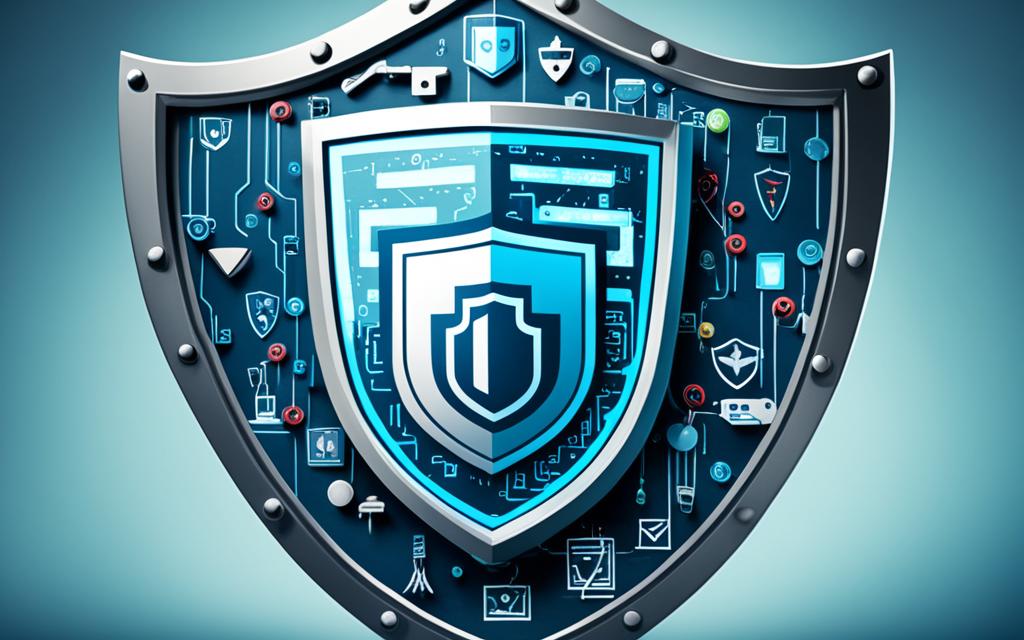
Common Types of Cyber Attacks
Cybersecurity is key in our digital world. It’s important to know the common cyber attacks to protect yourself and your data. These include DDoS attacks, password hacking, and phishing scams. The world of cyber threats is always changing.
Distributed Denial of Service (DDoS) Attacks
DDoS attacks happen when someone floods a website or server with traffic. This makes it hard for real users to get in. For businesses, these attacks can cause big problems, like downtime and losing money.
Man-in-the-Middle Attacks
In a man-in-the-middle attack, someone intercepts messages between two people. They can listen in or change the messages. This attack is sneaky and can happen without the people affected knowing.
Password Attacks
Password attacks try to guess or break your passwords. They use methods like dictionary attacks, brute-force attacks, and rainbow table attacks. These methods try many passwords or use pre-made lists of common passwords.
Email Attacks: Phishing and Spoofing
Phishing and spoofing are attacks that use email to trick people. They try to get you to share sensitive info or do something you shouldn’t. Phishing emails pretend to be from real places or people. Spoofing makes it look like an email came from someone else.
Knowing about these cyber attacks helps us protect ourselves and our data. It’s key for making good cybersecurity plans.
| Attack Type | Description | Impact |
|---|---|---|
| DDoS Attacks | Flooding a website or server with traffic to overwhelm its resources | Causes downtime and financial losses for businesses |
| Man-in-the-Middle Attacks | Intercepting communication between two parties to eavesdrop or modify data | Can lead to theft of sensitive information and unauthorized access |
| Password Attacks | Attempts to guess or crack user passwords using various techniques | Allows attackers to gain unauthorized access to accounts and systems |
| Phishing and Spoofing | Tricking users into revealing sensitive information or performing harmful actions | Can result in identity theft, financial losses, and further attacks |
Cybersecurity Best Practices for Individuals
Protecting our digital lives is more important than ever. We must follow best practices to keep our personal data and online safety secure. Here, I’ll share some key strategies for better cybersecurity best practices and personal cybersecurity.
Using strong, unique passwords is a basic step in online safety. Don’t pick passwords that are easy to guess, like birthdays or pet names. Choose a mix of letters, numbers, and special characters instead. Also, think about using a trusted password manager to keep and create secure passwords.
Enabling two-factor authentication (2FA) is also key. This adds an extra security step. Even if someone gets your password, they can’t get in without the extra code or biometric check.
- Watch out for phishing scams that try to get you to share sensitive info or download malware. Always check if emails, messages, or websites are real before you interact with them.
- Make sure your software and devices are updated with the latest security fixes. These updates often close security gaps and protect you from new threats.
- Be careful with public Wi-Fi, as it might not be safe. Consider using a VPN to encrypt your internet when on public networks.
By following these cybersecurity best practices, you can greatly improve your personal cybersecurity. This means a safer online experience. Always stay alert and act quickly to protect yourself online.
Building a Cybersecurity-Aware Culture in Organizations
Creating a cybersecurity-aware culture is key to protecting against cyber threats. By using security awareness programs, companies can teach their staff about cybersecurity best practices. This helps everyone feel responsible for keeping the organization’s assets safe.
Implementing Security Awareness Programs
Security awareness programs are essential for a cybersecurity-savvy workforce. They should include topics like password management, spotting phishing, and social engineering. Through regular training, workshops, and engaging content, employees can learn about cybersecurity and their role in protecting the company.
Developing Metrics for Success
To see if security awareness programs work, organizations need to track key metrics. These can be things like how many employees take part, how well they spot phishing, and the number of security issues reported. By looking at these numbers, companies can see what’s working and what needs to get better.
| Metric | Description | Ideal Target |
|---|---|---|
| Employee Participation Rate | The percentage of employees who actively participate in security awareness training and activities | 90% or higher |
| Phishing Simulation Success Rate | The percentage of employees who correctly identify and report simulated phishing attempts | 85% or higher |
| Reported Security Incidents | The number of security incidents reported by employees, indicating their vigilance and willingness to take action | Decreasing over time |
By using security awareness programs and tracking important metrics, organizations can build a strong cybersecurity culture. This lets employees take an active part in protecting the company’s digital assets.
Cybersecurity Certifications and Training
The world of cybersecurity is always changing. Getting the right certifications and training is key for those wanting a strong career in this field. These certifications prove your skills and show you’re dedicated to growing in your career.
The Certified Information Systems Security Professional (CISSP) is a top choice. It covers many security areas, like access control and cryptography. The Certified Information Security Manager (CISM) is great for those aiming for leadership roles. It focuses on managing cybersecurity.
For network security, the Cisco Certified Network Associate (CCNA) Security certification is a must-have. It shows you can secure and fix network systems.
| Certification | Focus Area | Issuing Organization |
|---|---|---|
| CISSP | Comprehensive Cybersecurity | International Information System Security Certification Consortium (ISC)² |
| CISM | Cybersecurity Management | Information Systems Audit and Control Association (ISACA) |
| CCNA Security | Network Security | Cisco Systems |
Staying up-to-date with cybersecurity training is also vital. Websites like Coursera, Udemy, and EdX offer many courses. These help professionals boost their skills and knowledge.
Investing in cybersecurity certifications and training can boost your career and help protect organizations. With more people needing cybersecurity experts, these qualifications can open new doors and help you succeed in your cybersecurity career development.
Conclusion
The digital world has grown complex and connected. It’s vital to know the basics of cybersecurity. This includes the CIA triad and how to spot cyber threats. This knowledge helps protect us from cyber attacks.
We looked at different areas in cybersecurity. We showed how you can make a difference in this field. Whether you’re into access control or network security, this guide can help you grow.
Staying updated and using best practices is key. We all need to be aware of cybersecurity threats. It’s not just for IT experts. It’s a team effort to keep our digital world safe.
FAQ
What is cybersecurity?
Cybersecurity is all about protecting networks, devices, and data from unauthorized access or harm. It uses technology and processes to keep things safe.
What is the CIA triad?
The CIA triad is key to computer security. It stands for Confidentiality, Integrity, and Availability. These three principles help keep data safe and systems running smoothly.
What are the common types of cyber attacks?
Cyber attacks can take many forms. Some common ones include DDoS attacks, man-in-the-middle attacks, and password attacks like dictionary and brute force attacks. Phishing and spoofing attacks are also common via email.
What are the best practices for individuals to enhance their cybersecurity?
To boost your cybersecurity, use strong passwords and turn on two-factor authentication. Be careful with phishing scams and keep your devices and software updated. Also, think twice before using public Wi-Fi.
Why is it important to build a cybersecurity-aware culture within organizations?
Having a cybersecurity-aware culture in companies is key to fighting cyber threats. It means teaching employees about cybersecurity and making everyone responsible for protecting the company’s assets.
What are the most recognized cybersecurity certifications?
Top cybersecurity certifications include CISSP, CISM, and CCNA Security. Getting these certifications and keeping up with professional development is vital in the fast-changing world of cybersecurity.

